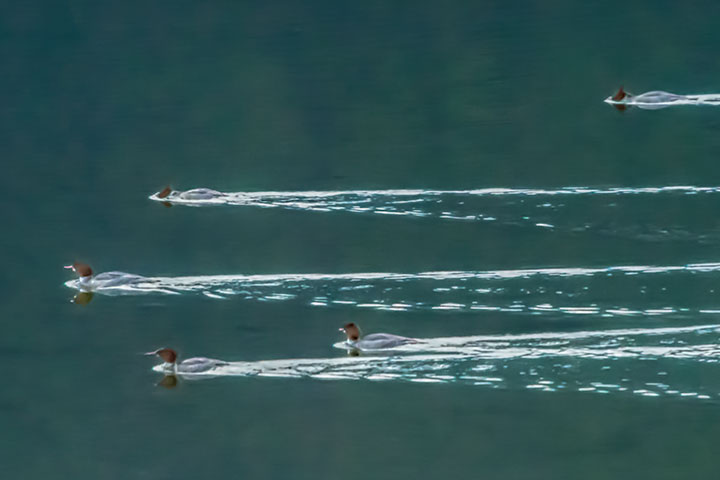No sighting on the Lake quite matches that of a hunting party of Common Mergansers. They spread out in a phalanx as they hunt for fish, often with their heads down as they course across the water scouring the depths. No other local wildlife hunts in this cooperative manner.
Common Mergansers scour the shallows for prey.


I sure love all your posts, Alistair and you are right 99.9% of the time, but I think there might just be other wildlife besides mergansers who hunt cooperatively. I heard a story about coyotes that illustrates this: geese resting in a field. Two coyotes play-fighting to distract them while a third snuck up from the other side to pounce.
I would assume this must also be true of wolf behaviour.
Eileen, certainly I have seen two coyotes in cooperative hunting. However, I have not seen a large number of them travelling in a phalanx the way mergansers hunt. The difference might come from the different visibility through air and water. Mergansers spread out to be able to spot any fish. Coyotes are constantly shifting their positions to trap a single prey. However, maybe I should have limited my remarks to hunting on water. Incidentally, on a previous posting about this I noted that, “The sight is reminiscent of a fleet of frigates searching the depths for U-boats.”
Eileen could have a point. Cooperative hunting implies a single target the group is focused on and trying to catch so they can all have a share.
I think the Common Mergansers are cooperatively foraging. They are not all fixed on a single target, but know that they all have a better chance of snagging that escaping fish if they work together, but they won’t share it if they do catch one.
Locally, Red-breasted Mergansers do this too, and so do the more social river otters. On dry land, a long list of birds forage cooperatively too.